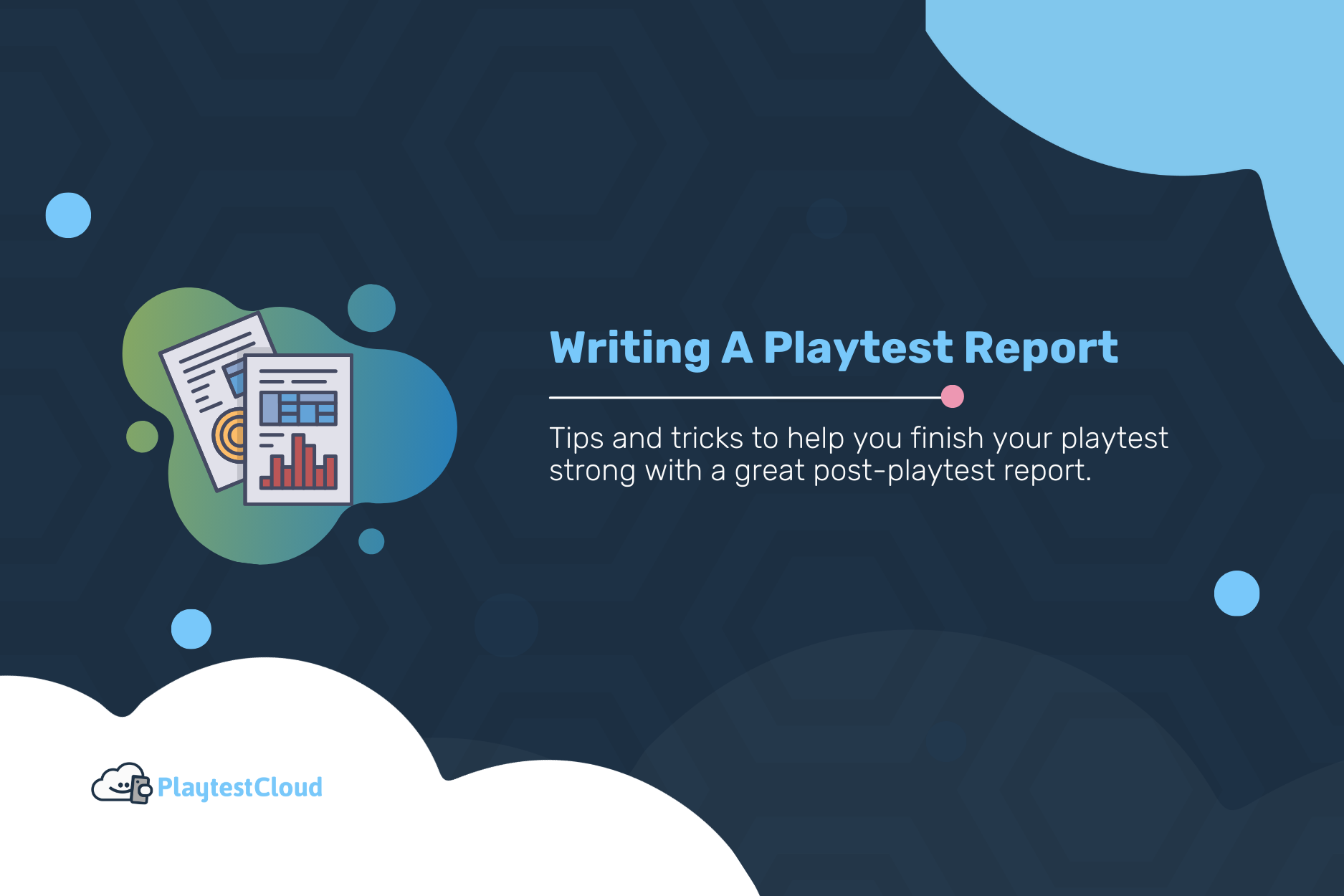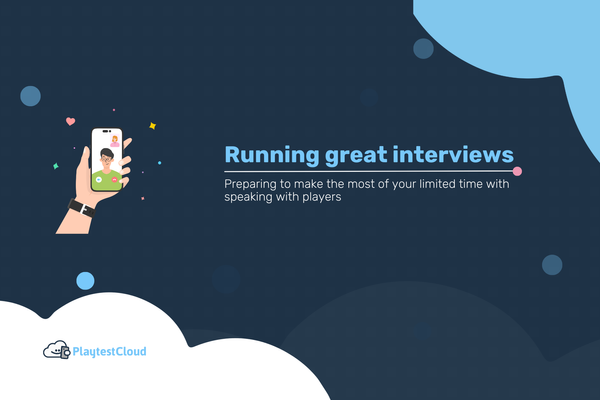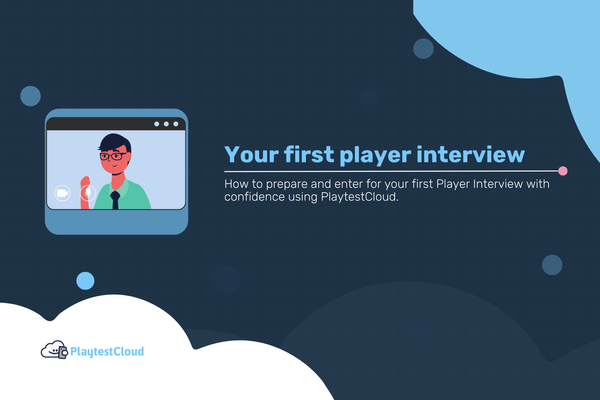So you’ve just finished a playtest and now you’re struck with the age-old question of “what now?” ringing in your head. You now have a plethora of information and data, and you need to be able to present it to others in a useful, productive way. Testing early and often is important, as each of these reports can be a proactive way of looking at your game[1]. This article is an introduction on how you can write your first post-playtest report and communicate your findings with others. Even if this isn’t your first post-playtest report and you’re an experienced user researcher, there will certainly be some tips that you can use and incorporate into your reports moving forward.
Know your audience: Communication is key!
When you’re crafting your post-playtest report, it’s important to keep in mind who your audience is and how to keep their attention. Your main objective with the report is to convey your data in a way that can lead to actionable results. Your report should motivate the team to act on those results and work towards increasing the quality of the product[2]. As you draft your report, make sure that you are catering to the needs and expectations of your audience: what you would show to the game designers may be different than the executives or programmers on your team. Be sure to summarize and make it understandable for someone who isn’t a user researcher; the report should be understood as a standalone document[3]. Use language and lingo that everyone will understand, and follow the standards that are in place. Something as simple as including some user quotes from the playtests to drive home a point may be useful in some situations or with particular team members, but not others. Additionally, choosing the format for your report, whether it be a traditional paper report or a presentation-based report, can highlight specific findings to quickly convey results in a way that makes sense for your audience[4].
Data are not results: How to make your playtest findings actionable
You’ve successfully run your playtests and now you are wading through the findings and information that you have gathered. This is arguably where the real magic happens: turning your findings and results into actionable ways to improve your game. Importantly, it may seem easiest to focus on the obvious or more common sense results and findings, but it may be beneficial to include some of the more unpredictable or outlier elements to highlight the different types of players and issues they face[5]. When relaying the results and turning them into actionable changes that the team can implement, be sure to provide reasoning for these findings[6] – whether in your own words or in the words of the participants – so that others understand where the pitfall occurred and how to fix it. With PlaytestCloud, you can share or download video of the playtest you’ve conducted with the rest of your team, to help digest everything in your report and to create a better connection between what players are doing and how to support them. As well, the raw data included in the video playtests will be available to your team, such as any annotations or summaries of what the playtesters were saying or doing. All of this data can help showcase why action needs to be taken on your specific game and to offer more context than simply words on a page.
Don’t get lost in the weeds: Focusing your report
Making sure that your report is concise, as well as comprehensive, may seem like a daunting challenge, but there are some easy ways to improve the focus of your post-playtest report. As mentioned previously, creating summaries for your findings and results can allow for at-a-glance information to be available, where the readers can go back to the report for specific details later. Additionally, there are a few standard sections that can be found within a post-playtest report: aim, methods and design, executive summary, description of findings, and next steps[7]. Utilizing these headings can help frame your report in a way that allows readers to easily skim through to sections that are relevant to them, and showcases the work that has been completed in an easily digestible way. It’s great to utilize player feedback and quotes to really drive home issues and provide reasoning for the feedback you were given[8], but don’t overdo it and inundate readers with quotes that might not be relevant to them.
Playtests are important, but the reports are too!
Playtests are critical in discovering what can be improved within your game, but the ensuing report is what will communicate what needs to change to the people who can implement that change. In fact, just like how it is best to playtest early and often, this holds true for the reports so that the reports can be proactive attempts to make the game the best that it can be[9]. Be sure to spend the time crafting your report just as you had for your playtest: conveying your findings to the right people is just as important as the findings in the first place! Go through a few drafts, pass it around for feedback, and speak with people who know your audience and what they are receptive to. Even looking at academic playtest reports may be useful in structuring and formatting your report, as they tend to be concise and highlight best practices in report writing for a knowledgeable audience.
Additionally, as an invaluable resource, if you have decided to run your playtest with us, PlaytestCloud offers a variety of reporting styles to help mitigate some of the time you would spend creating your post-playtest report. This includes services as basic as having our team of experts annotate your videos all the way up to creating a full executive report with actionable follow-ups. If you're interested in partnering with us, contact us and we would be happy to discuss the project with you.
Desurvire et al., 2004, full article ↩︎
Mirza-Babaei, 2018, p. 323, in Drachen, Mirza-Babaei, & Nacke's Games User Research, full book ↩︎
Fullerton et al., 2004, p. 661, full chapter ↩︎
Mirza-Babaei, 2018, p. 329, in Drachen, Mirza-Babaei, & Nacke's Games User Research, full book ↩︎
Desurvire et al., 2004, full article ↩︎
Mirza-Babaei, 2018, p. 325, in Drachen, Mirza-Babaei, & Nacke's Games User Research, full book ↩︎
Mirza-Babaei, 2018, pp. 324-326, in Drachen, Mirza-Babaei, & Nacke's Games User Research, full book ↩︎
Mirza-Babaei, 2018, p. 325, in Drachen, Mirza-Babaei, & Nacke's Games User Research, full book ↩︎
Desurvire et al., 2004, full article ↩︎
Still need some help writing your playtest report or have a question about how best to report on your playtest findings? Contact us using the form below and we will be happy to assist in the best way we can!







